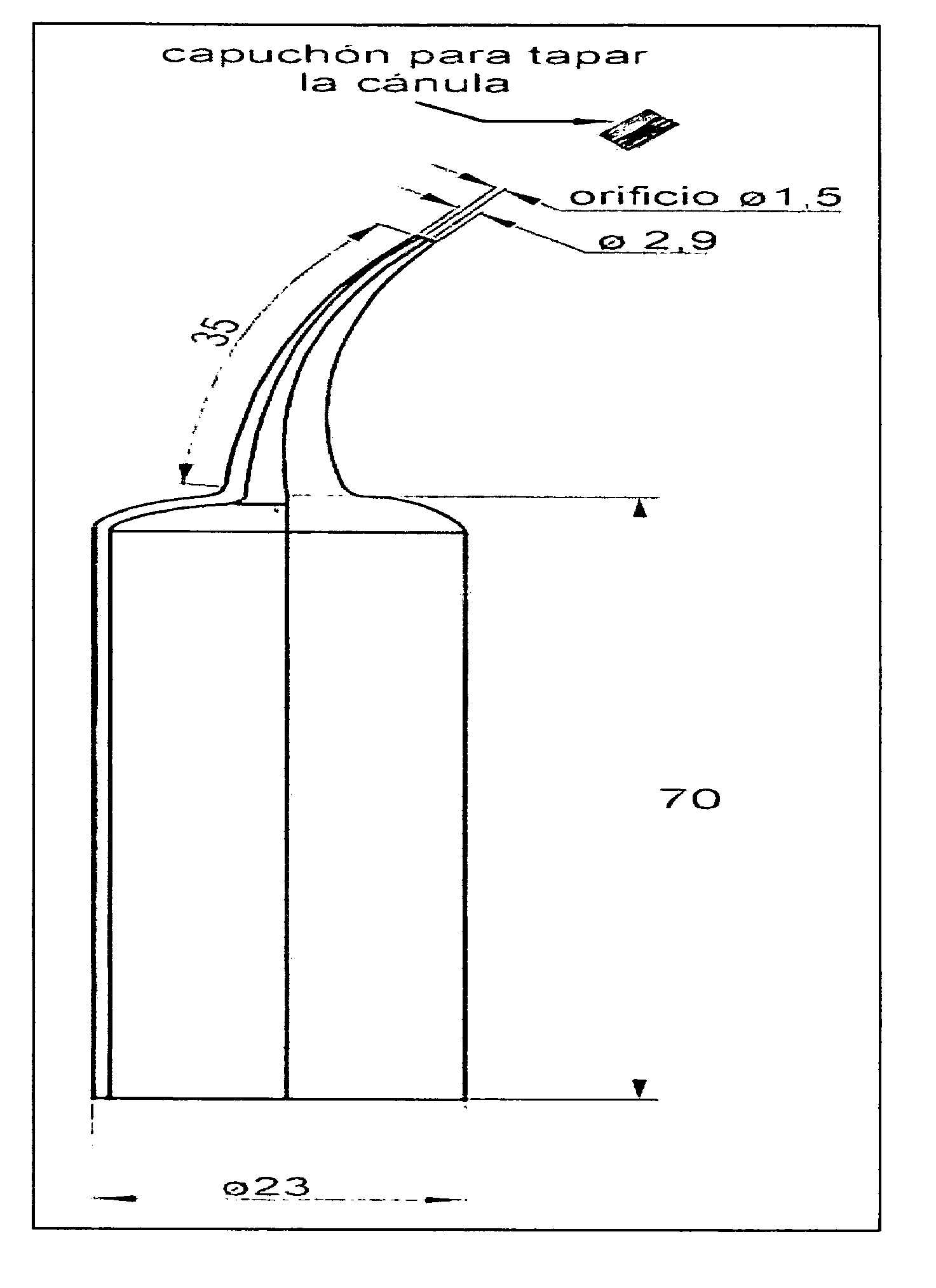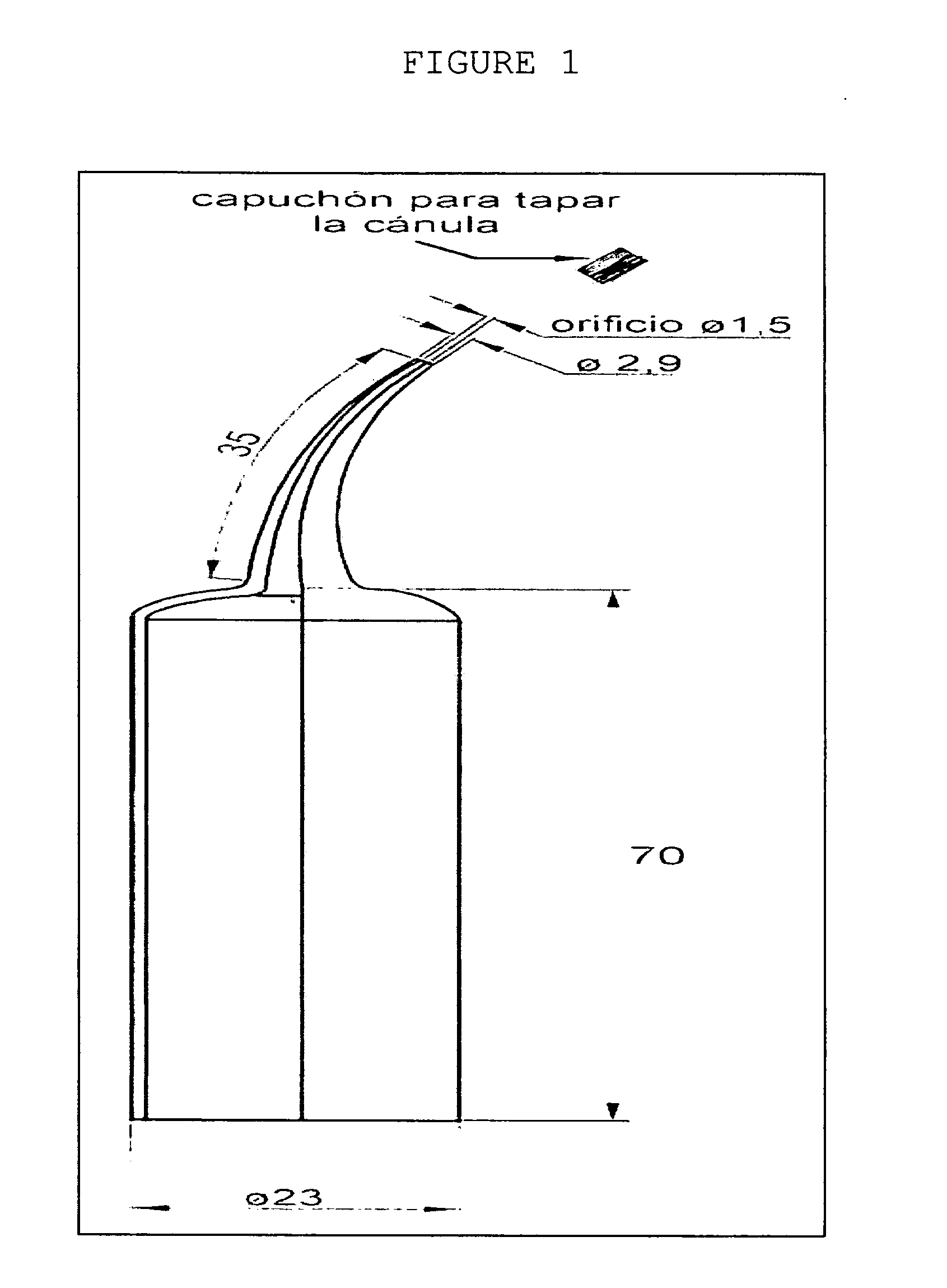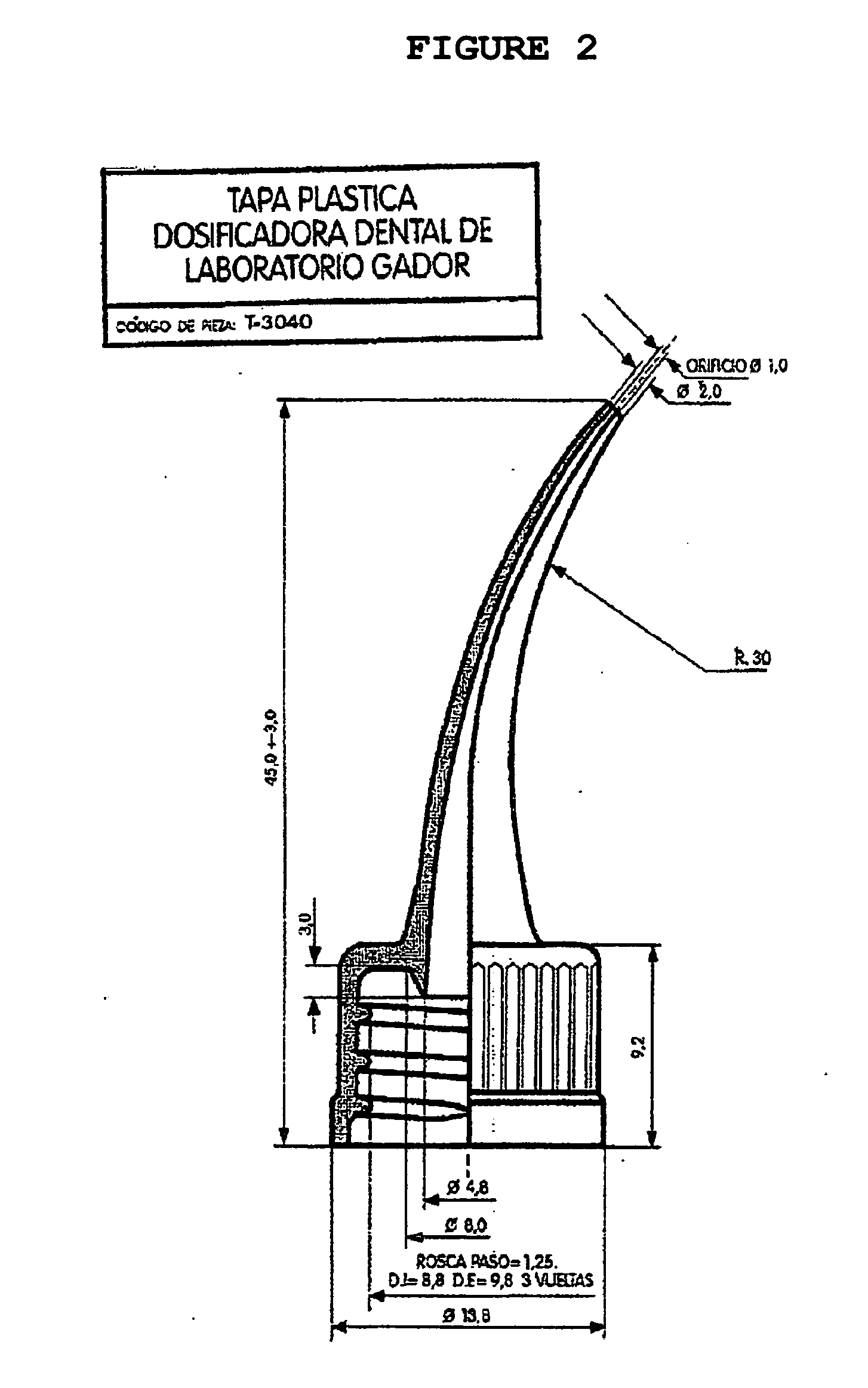Local and residual application system for in intra-oral medications
a local and residual application system technology, applied in the field of intra-oral medication application system, can solve the problems of affecting the removal effect of abrasives, easy swallowing, and easy absorbing of undesirable side effects, and achieve the effect of preventing dehydration
- Summary
- Abstract
- Description
- Claims
- Application Information
AI Technical Summary
Benefits of technology
Problems solved by technology
Method used
Image
Examples
examples
[0063] Herein enclosed is a description of a model of the invention as regards its composition, applicators, uses and demonstrations of persistency and selectivity.
example 3.1
Composition of a Chlorhexidine Gel of Persistent Residual Action
[0064] Chlorhexidine digluconate 20% . . . 0.63%* [0065] Propylenglycol . . . 20.00% [0066] Blue D Patent VE-131 . . . 0.0016% [0067] Hidroxypropylcellulose (Klucel HF Pharm) . . . 2.5% [0068] Purified water . . . 76.8684%
(*) Takes in account 5% of excess.
Manufacturing Technique:
[0069] 1. Load in a reactor of adequate capacity the purified water, start agitating and warm up until achieving the boiling point for a period of five minutes,
[0070] 2. cool the purified water to a temperature of 80 to 85° C., with constant agitation,
[0071] 3. unload from the reactor part of the purified water from the previous step to a stainless steel receptacle previously sanitized and furnished with a cap,
[0072] 4. keeping the temperature within the range of 80 to 85° C., incorporate to the reactor hydroxypropylcellulose with agitation,
[0073] 5. continue the agitation and apply homogenizing turbine to disperse the polymer,
[0074] 6...
example 3.2
(With Graphics) Model of Applicators for the Intra-cavity (Intra-oral) Use of the Chlorhexidine Gel. See FIG. 1
PUM
 Login to View More
Login to View More Abstract
Description
Claims
Application Information
 Login to View More
Login to View More - R&D
- Intellectual Property
- Life Sciences
- Materials
- Tech Scout
- Unparalleled Data Quality
- Higher Quality Content
- 60% Fewer Hallucinations
Browse by: Latest US Patents, China's latest patents, Technical Efficacy Thesaurus, Application Domain, Technology Topic, Popular Technical Reports.
© 2025 PatSnap. All rights reserved.Legal|Privacy policy|Modern Slavery Act Transparency Statement|Sitemap|About US| Contact US: help@patsnap.com



